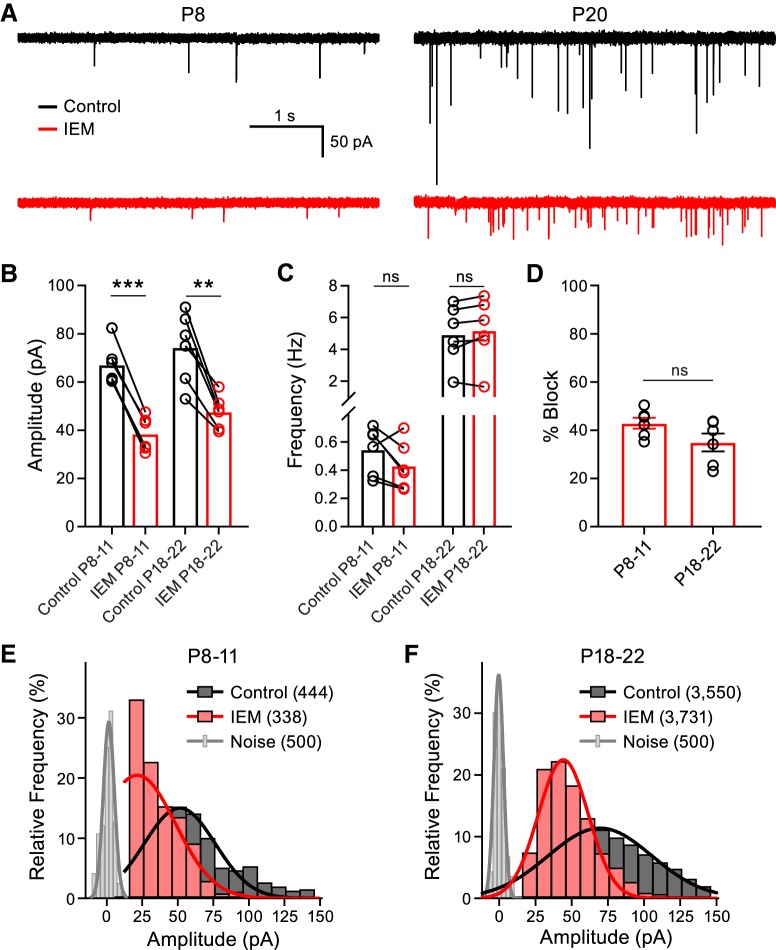Figure 2.
Blocking CP-AMPARs suppresses spontaneous mEPSC amplitudes. A, Representative mEPSCs recorded at a holding potential of −70 mV from a P8 (left) and a P20 (right) animal in control conditions (black) and after the addition of IEM-1460 (red). B, mEPSC peak amplitude is reduced in P8–P11 and P18–P22 animals after the addition of IEM-1460 (paired t test; P8–P11: n = 6, p < 0.0001; P18–P22: n = 6, p = 0.0019). C, Frequency of the mEPSCs was not altered by IEM-1460 (paired t test; P8–P11: n = 6, p = 0.1173; P18–P22: n = 6, p = 0.1494). D, Percentage block induced by IEM-1460 between the P8–P11 and P18–P22 groups was not different (unpaired t test; P8–P11: n = 6; P18–P22: n = 6; p = 0.0955). E, F, Frequency distribution of mEPSC peak amplitudes (bin size = 10 pA) for the P8–P11 and P18–P22 groups, respectively, in control conditions (black) or after the addition of IEM-1460 (red). The distribution of electrical noise is shown in gray. The total numbers of events per condition are shown in parentheses in the figure. ns, nonsignificant, **p < 0.005, ***p < 0.001.

